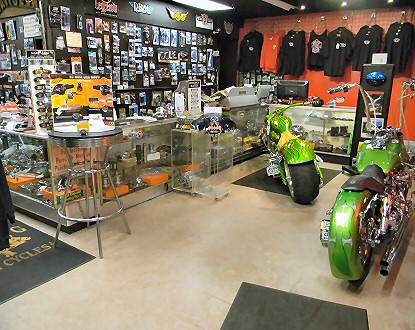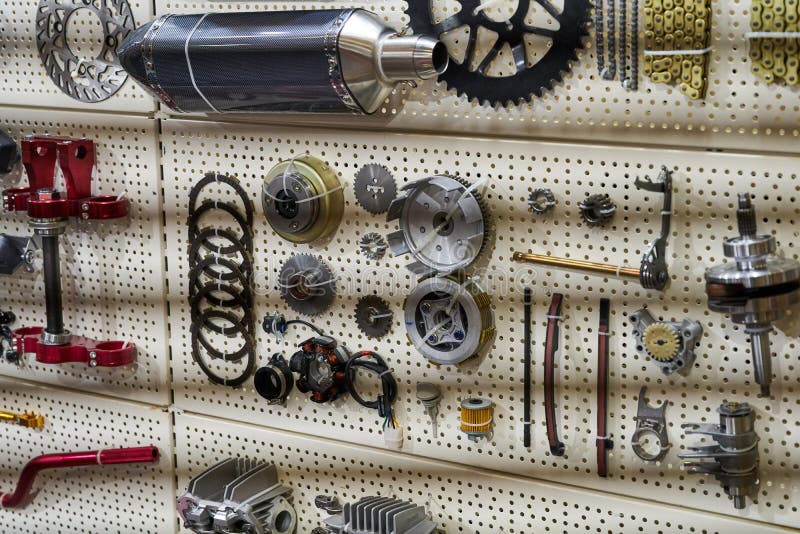Comprehending the Important Parts of a Bike: A Comprehensive Guide for Fanatics
For motorcycle fanatics looking to boost their riding experience and ensure their bikes run efficiently, understanding the vital elements of a motorbike is vital. Each element, from the engine's elaborate operations to the critical duty of the stopping mechanisms, not only impacts efficiency yet additionally safety and security and convenience.
Engine Elements

The camshaft plays a crucial function in controlling the timing of the engine's shutoffs, ensuring the exact opening and closing required for effective fuel and air consumption, as well as exhaust expulsion. This timing is crucial to preserving optimal engine efficiency and performance. Furthermore, the carburetor or gas shot system, depending upon the bike model, is accountable for blending air with fuel in the appropriate proportion for burning.
The cooling system, either air or liquid-based, works to preserve the engine's temperature level within operational limitations, preventing overheating and making sure long life - motocross gear nz. Each component, thoroughly developed and incorporated, adds to the smooth operation of the engine, defining the motorcycle's power outcome and general efficiency
Transmission System
Indispensable to the bike's functionality, the transmission system makes sure reliable power transfer from the engine to the wheels. This system consists of numerous crucial elements, consisting of the clutch, transmission, and last drive, each playing an important function in converting the engine's power right into activity. The clutch, typically operated by a hand lever, serves to disengage the engine and engage from the transmission, permitting smooth gear changes and regulated acceleration.
The gearbox, commonly described as the transmission correct, has a collection of equipments that bikers can by hand move through to change the bike's rate and torque output. These equipments are arranged in a sequence that enables the motorcycle to accelerate efficiently and keep ideal engine performance across numerous rates. A lot of motorbikes utilize a consecutive transmission, needing the motorcyclist to move gears in a predetermined order.
Braking Devices
While recognizing the transmission system is essential to taking advantage of a motorcycle's power, equally vital is the capability to control and quit that power properly, which is where stopping mechanisms enter play. Brakes are critical for security and performance, giving the motorcyclist with the required control to navigate numerous surfaces and conditions. Generally, motorcycles include 2 sorts of stopping systems: disc brakes and drum brakes.
Disc brakes are a lot more prevalent in modern-day motorbikes as a result of their remarkable performance. They contain a brake disc, caliper, and pads. When activated, the caliper presses the brake pads against the rotating disc, converting kinetic energy right into warm, therefore slowing down the wheel. This system supplies far better warm dissipation, regular performance, and improved quiting power, specifically in wet problems.
Conversely, drum brakes, though much less usual, are still discovered in some bikes. They work by pressing brake footwear versus the internal surface area of a drum affixed to the wheel. While typically much less reliable in warmth dissipation and stopping power, drum brakes are simpler and much more cost-efficient.
Understanding these braking systems' nuances enables motorcyclists to keep their bikes properly and appreciate the engineering that guarantees risk-free and effective quiting.
Suspension and Guiding
Suspension and guiding systems are essential parts that considerably influence a motorbike's handling and trip comfort. The suspension system, including forks at the front and shock absorbers at the rear, absorbs road irregularities, boosting security and control. Front forks, upside down or normally telescopic, compress and rebound to mitigate influences, while back shock absorbers maintain tire contact with the road, important motorcycle carburetor for traction and security.
Guiding, centered around the handlebars, connects the rider to the motorcycle's directional control. The guiding head bearings make certain smooth procedure, permitting exact maneuverability. Appropriate alignment and upkeep of these bearings are crucial for foreseeable guiding action and minimizing motorcyclist tiredness.
The suspension's adjustability is one more crucial aspect; preload, damping, and rebound setups enable personalization to suit numerous riding designs and problems. This flexibility is crucial for maximizing efficiency, whether navigating urban roads or dealing with tough trails. Innovations like digital suspension systems offer real-time changes, boosting trip quality throughout diverse terrains.

Electric Systems
After making sure a smooth and controlled trip via effective suspension and guiding systems, attention transforms to the electrical systems, a critical element of modern motorbikes. These systems play a vital role not just in beginning the engine however additionally in powering various elements that boost the functionality and security of motorcycle fuel tank the motorcycle.
At the heart of a bike's electric system is the battery, which stores electric energy essential for beginning the engine and powering complementary systems - motox parts nz. The alternator or generator, combined with the rectifier-regulator, makes sure the battery continues to be charged while the motorbike functions, transforming power into electrical energy and preserving voltage levels
The ignition system, one more essential part, is responsible for firing up the air-fuel blend in visit the website the engine's cyndrical tubes. Modern bikes usually utilize an electronic ignition system, offering greater efficiency and dependability compared to conventional systems.
Illumination systems, including headlights, tail lights, and indicators, are also important, guaranteeing visibility and safety for the biker. Additional electronic components such as sensing units, control systems, and displays contribute to advanced features like gas shot monitoring, anti-lock stopping systems (ABDOMINAL), and digital dashboards, further boosting the riding experience.
Conclusion
A thorough understanding of a motorcycle's essential parts, including the engine, transmission system, stopping systems, suspension, steering, and electric systems, is essential for fanatics aiming to maximize security, efficiency, and comfort. Proficiency of these elements permits informed choices concerning upkeep and upgrades, ultimately improving the riding experience. By incorporating this knowledge, cyclists can ensure their motorbikes run at peak efficiency and dependability, thereby making best use of both enjoyment and durability of their lorries.
For motorcycle lovers looking to boost their riding experience and ensure their bikes run smoothly, comprehending the crucial components of a motorbike is extremely important.Integral to the motorbike's performance, the transmission system makes certain efficient power transfer from the engine to the wheels.While understanding the transmission system is crucial to using a motorcycle's power, similarly crucial is the capacity to manage and quit that power effectively, which is where braking systems come into play. Normally, bikes include 2 kinds of stopping systems: disc brakes and drum brakes.
An extensive comprehension of a motorbike's vital components, including the engine, transmission system, braking devices, suspension, guiding, and electrical systems, is vital for enthusiasts aiming to optimize security, performance, and comfort.